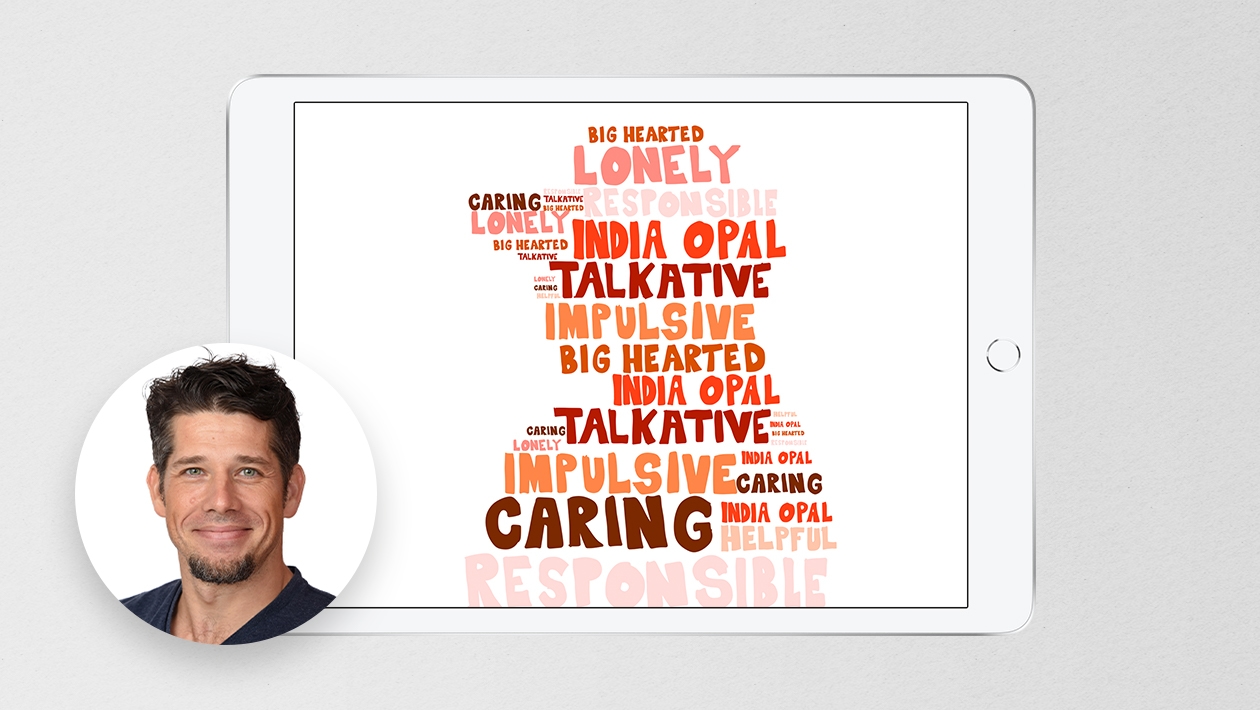Introduction
Writing a one word poem takes creativity, critical thinking, word knowledge, and the ability to link the written word to an artistic vision. Students of all ages can use this form of “word play” to rethink vocabulary words, portray emotions, and to use ingenuity and problem solving skills. To say that the poem is only one word is a bit of a “trick” because not only do students have to pick one word as their poem and create a colorful and/or textural element, but they also have to write the title of the poem which will include multiple thoughtfully selected words.
Learning Objective
In this English language arts lesson, my class focused on mood — the atmosphere, feeling, or emotions of a work. Writing a one word poems asks students to stretch their imagination to think about how illustrators (and even film makers) use imagery (color, texture, and lighting) to create an artistic vision that unveils the word’s meaning. You could easily teach this lesson with a multitude of other ELA learning objectives including tone, word choice, connotation, or simply learning academic vocabulary words. This lesson could even tie into SEL if social emotional words were chosen.
The Process
To begin this project, students selected an emotional word to represent a mood in one of the short stories we read in class. They perused an online thesaurus to find the perfect word to represent their exact feeling. Next, students opened Keynote and wrote their word using bold text. They brainstormed the colors, textures, and lighting that would further deepen the meaning of their one word poem and set off to take photos at school or at home. By picking emotionally charged words, students thought deeply and added additional meaning to their poem using the visual layers of vibrant colors, unique textures, and carefully crafted lighting to illuminate their word. Shapes or doodles could also be added if this enhanced the meaning. The last step was to determine a title that brought their one word poem alive. It is important to note that the title can be as long or as short as needed — there are no rules to titles.
Reflection
Because I have created one word poems myself, I know it would be almost impossible for anyone to interpret and understand the personalized meaning of this type of poetry. Therefore, I asked students to self reflect on the “one word" they used for their poem, the title, and why they chose the specific textures, colors, and lighting for their illustrative text art. Students were able to choose between a written or audio reflection.
Lesson Recap
Students commented that this was one of their favorite creativity challenges all year. Afterwards, they laughed because they thought this would be an easy challenge when it was first presented. They soon realized they had to “use their brain more than they thought”. For most students, they felt the title of their poem evolved as they thought critically about the colors, textures, and lighting behind each letter in their word. They also shared that this lesson helped them to understand how an author makes a conscious choice when using words and images to get their point across. Finally, by the end of their project they felt they were able to deeply comprehend the definition and meaning of the one word they chose.
We celebrated by digitally sharing our poetry and also hanging hard copies in the classroom. Additionally several students digitally gave their artwork to friends or family as a gift.
Learn how, and explore more Everyone Can Create Projects >












August 14, 2023 . English
English
Super challenge Jeannie! I can see why the students liked it - it requires thoughtful preparation as well as creative design. I love the choice of audio and the comprehension skills that this activity emphasizes.
This action is unavailable while under moderation.
This action is unavailable while under moderation.